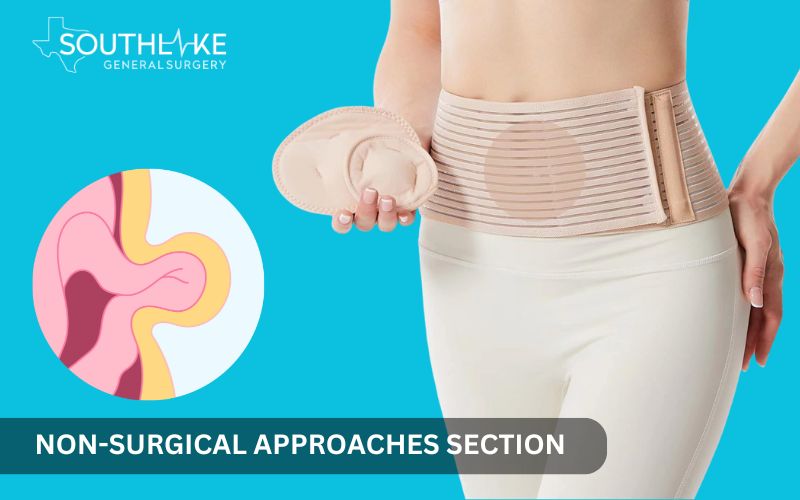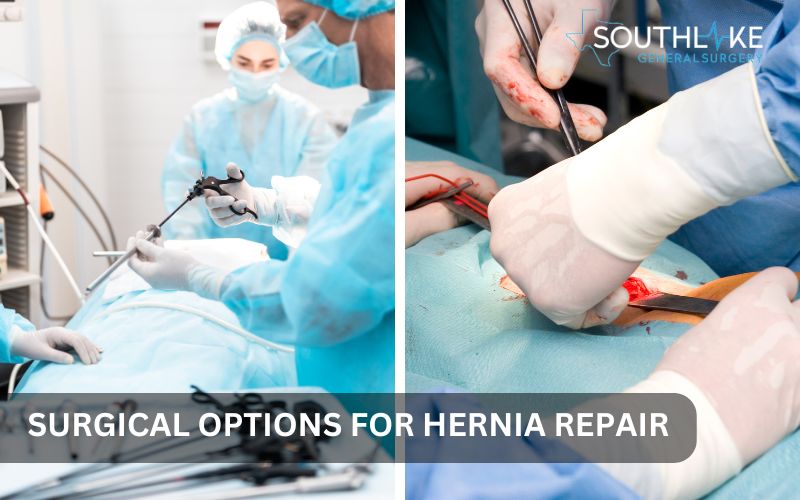Female real hernia surgery can often be misunderstood or overlooked in women. It is important for females to be aware of the hernia symptoms and treatment options available for this condition.
By educating yourself on female real hernia surgery, you can make informed decisions about your health and well-being. Remember to consult with a healthcare professional if you suspect you may have a hernia.
Hernias are a prevalent medical condition that can impact individuals of all genders. They occur when part of an organ or tissue pushes through a hole or weak spot in the abdominal wall. While hernias can occur in various parts of the body, they often occur in the abdomen or groin area.
In this blog post, we will focus on hernias in women and provide a comprehensive understanding of female real hernia surgery. We will explore the types of hernias that are more common in women, the signs and symptoms to look out for, the causes and risk factors, the diagnostic process, available treatment options, and recovery and post-operative care.
Understanding female real hernia surgery is important, as it can help women make informed decisions about their healthcare and seek appropriate medical attention. By providing valuable information and insights, this blog aims to empower women to take charge of their health and well-being.
Key Highlights
- Hernias in women can present with symptoms such as abdominal pain, discomfort, and visible signs.
- Surgical repair is often required for hernias in order to alleviate symptoms and improve quality of life.
- There are different surgical options available for hernia repair, including laparoscopic surgery and open surgery.
- It is important for women to seek medical attention if they experience chronic pain or discomfort related to hernias.
- Addressing hernias promptly can lead to a better quality of life and prevent complications.
What Is a Female Real Hernia?
When the abdominal wall becomes weak or opens, causing tissue or organs to protrude, this condition is known as a female real hernia. The abdominal wall is comprised of various layers of muscles and connective tissue that help maintain the integrity of the abdominal cavity.
However, certain factors such as pregnancy, heavy lifting, or chronic coughing, can weaken the abdominal wall, leading to hernias.
While hernias can occur in various parts of the body, certain types are more prevalent in women, including inguinal hernias, umbilical hernias, femoral hernias, and incisional hernias.
- An inguinal hernia is a condition that occurs when a portion of the intestines protrudes into the inguinal canal, which is a small aperture located on the inner of the thigh.
- Umbilical hernias occur when part of the intestine pokes through an opening in the abdominal wall near the belly button.
- Femoral hernias occur in the femoral canal, which is located underneath the inguinal canal.
- Incisional hernias occur when tissue protrudes through a former incision in the abdominal wall.
These are the most common types of hernias seen in women and may require surgical repair to alleviate symptoms and prevent further complications.
Different Types of Hernias in Women
In women, various types of hernias can occur, each with its own specific characteristics and locations. Among women, the most common type of hernia is the inguinal hernia, accounting for 75% of all hernias.
Inguinal hernias occur when a part of the intestine or abdominal tissue protrudes through the inguinal canal, a passageway in the groin area.
Another type of hernia that can occur in women is the umbilical hernia, which develops near the belly button. This type of hernia is often seen in infants and may resolve on its own as the child grows. In certain instances, surgical intervention may be necessary to repair the hernia.
Femoral hernias are less common but can occur in women, particularly in the upper thigh area. These hernias can develop when a part of the intestine or fatty tissue protrudes through the femoral canal, which is located below the inguinal canal.
Incisional hernias can also occur in women who have had previous abdominal surgeries. In these cases, weakened areas of the abdominal wall can allow tissue to protrude through the incision site.
It is important to be aware of these different types of hernias and seek medical attention if symptoms arise.
Signs and Symptoms of Hernias in Women

Hernias in women can cause a range of signs and symptoms, although they may be less noticeable compared to hernias in men. Here are a few symptoms to look out for:
- Aching or sharp pains at the site of the hernia
- Burning sensations or discomfort that worsens with physical activity
- Feeling of pressure or a visible bulge in the abdomen or groin area
- Groin pain or discomfort that is unexplained or recurrent
- Abdominal pain or discomfort that is chronic or worsens over time
It is important to note that not all hernias cause symptoms, and some may only be discovered during a routine physical examination.
If you experience any of these symptoms or suspect a hernia, it is recommended to seek medical attention for further evaluation and appropriate treatment.
Common Symptoms to Look Out For
- Experiencing a burning sensation or pain at the location of the hernia
- Groin pain or discomfort that is unexplained or recurrent
- A protrusion that is visible in the groin or abdomen
- Abdominal pain or discomfort that is chronic or worsens over time
- Intense or pressing pain in the pelvic area
It is important to note that not all hernias cause symptoms, and some may be discovered incidentally during a routine physical examination or medical imaging.
However, if you experience any of these symptoms or suspect a hernia, it is recommended to seek medical attention for further evaluation and appropriate treatment.
When to Seek Medical Attention

If you are experiencing chronic pain or discomfort in the abdomen or groin area, it is important to seek medical attention. While not all hernias require immediate medical intervention, there are certain situations where seeking prompt medical attention is crucial:
- Chronic or intense pain that hampers daily functioning or impacts overall well-being
- Symptoms that worsen over time or become more frequent
- Inability to reposition the hernia, or if it gets incarcerated (trapped)
- Symptoms of a medical emergency, such as severe pain, nausea, vomiting, or changes in bowel movements
Ignoring persistent hernia symptoms can lead to complications and potentially impact your overall health and well-being. A medical professional can evaluate your symptoms, provide a proper diagnosis, and recommend appropriate treatment options based on your individual case.
Timely intervention and treatment can enhance your quality of life and mitigate the risk of additional complications.
Causes and Risk Factors
Hernias in women can be caused by a combination of factors and may develop due to both genetic and lifestyle-related risk factors. Among the most prevalent causes and possible risks are:
- Weakness in the abdominal wall or connective tissues, which can be present from birth or develop over time
- Heavy lifting or strenuous physical activity, especially if proper techniques are not followed
- The abdominal muscles can experience strain from excessive and repeated sneezing or coughing
- Pregnancy and childbirth, which can weaken the abdominal muscles and increase pressure on the abdomen
- Abdominal surgery in the past may result in the formation of weak areas or scar tissue in the abdominal wall
While these factors increase the risk of developing hernias, it is important to note that not everyone with these risk factors will develop a hernia.
It is essential to maintain a healthy lifestyle, avoid heavy lifting, and seek medical attention if you experience symptoms or suspect a hernia.
Why Hernias Occur in Women
The occurrence of hernia disease in female can be attributed to a combination of factors. One of the main reasons is the presence of weak spots or openings in the abdominal wall and connective tissues. These weak spots can be present from birth or develop over time due to various factors.
Hernias can result from the physical strain of pregnancy and childbirth in women. The expansion of the uterus during pregnancy puts pressure on the abdominal wall, making it more susceptible to hernias.
In addition, the process of childbirth can additionally contribute to the weakening of the abdominal muscles and increase the likelihood of developing hernias.
Activities that involve heavy lifting or strenuous physical exertion can also strain the abdominal muscles and contribute to the development of hernias. Chronic coughing or sneezing can put additional stress on the abdominal wall, increasing the chances of hernias.
Understanding these factors can help women take precautions and minimize their risk of developing hernias. It is important to maintain a healthy lifestyle, avoid straining activities, and seek medical attention if symptoms or concerns arise.
Lifestyle and Genetic Risk Factors
The development of hernias in women can be influenced by both lifestyle and genetic factors. While some individuals may have a genetic predisposition to weakened connective tissues or abdominal wall defects, certain lifestyle choices can increase the risk of hernias.
Genetic risk factors can include inherited conditions that affect the strength and integrity of the abdominal wall or connective tissues. These genetic factors can make individuals more prone to developing hernias throughout their lives.
Factors such as engaging in strenuous activities, exerting pressure during bowel movements, persistent coughing, and being overweight can also play a role in the formation of hernias. Engaging in these activities puts additional stress on the abdominal wall, increasing the risk of weakened areas and potential herniation.
Maintaining a healthy lifestyle, including regular exercise, proper lifting techniques, and managing chronic conditions such as obesity or respiratory issues, can help reduce the risk of hernias in women.
Diagnosis of Female Real Hernia
When it comes to diagnosing a female real hernia, a thorough examination of the patient’s physical condition, medical background, and, if necessary, imaging tests are all part of the process.
During a physical examination, the doctor will look for symptoms of a hernia, such a bulge or soreness, in the lower abdomen and groin region.
In some cases, additional tests may be recommended to confirm the presence of a hernia or assess its severity. These tests may include imaging studies such as a CT scan or ultrasound.
It is important to consult with a medical professional if you suspect a hernia or experience symptoms such as chronic pain, discomfort, or visible bulges.
A proper diagnosis is crucial to determine the most appropriate treatment options and improve quality of life.
Professional Diagnosis by Dr. Valeria Simone
Diagnosing a female real hernia involves a thorough evaluation by a medical professional, such as Dr. Valeria Simone at Southlake General Surgery. Dr. Simone is an experienced surgeon specializing in hernia repair and can provide an accurate diagnosis based on a comprehensive assessment.
Dr. Simone initiates the diagnosis process by conducting a thorough physical examination. This examination focuses on the abdominal and groin region, where Dr. Simone looks for indications of a hernia, such as the presence of a visible bulge or tenderness. She will also review your medical history and discuss any symptoms you may be experiencing.
In some cases, Dr. Simone may recommend additional tests, such as a CT scan or ultrasound, to confirm the presence of a hernia or assess its severity. The results of these imaging examinations can show the precise location of the problem and inform the course of treatment.
By seeking a professional diagnosis from Dr. Simone, you can receive personalized care and guidance for your hernia condition, ensuring the most appropriate treatment options are recommended.
Importance of Early Detection
Early detection of a female real hernia is crucial for timely intervention and improved quality of life. Recognizing the symptoms and seeking medical attention at the earliest signs of a hernia can prevent the condition from worsening and minimize the risk of complications.
When a hernia is detected early, there is a higher chance of successful treatment and a lower risk of severe symptoms or emergency situations. Early intervention can also help prevent the need for more invasive surgical procedures and reduce the impact on daily activities.
If you suspect you may be experiencing hernia symptoms, such as pain, discomfort, or a bulge, it is important not to disregard them.
Schedule a consultation with Dr. Valeria Simone at Southlake General Surgery for a comprehensive evaluation and personalized treatment plan.
Early detection and appropriate management can significantly improve your quality of life and prevent further complications associated with hernias.
Treatment Options at Southlake General Surgery
At Southlake General Surgery, various treatment options are available for female real hernias. Dr. Valeria Simone is an expert in hernia repairs and can assess your condition to determine the best course of treatment.
Non-surgical approaches may be considered for small or asymptomatic hernias. These may include lifestyle modifications, such as avoiding heavy lifting or strenuous activities and wearing a special belt or supportive garment to provide additional support to the affected area.
Surgical solutions for hernia repair are also available. The choice between open surgery and minimally invasive laparoscopic surgery is based on the hernia’s size and location. Dr. Simone will discuss the advantages and disadvantages of each approach and tailor the treatment plan to meet your specific needs.
By choosing Southlake General Surgery for your hernia treatment, you can expect personalized care and comprehensive treatment options that prioritize your safety and well-being.
Non-Surgical Approaches

For small or asymptomatic hernias, non-surgical approaches may be considered as an initial treatment option. These approaches focus on lifestyle modifications and supportive measures to manage the hernia and prevent its progression. Non-surgical approaches may include:
- Avoid heavy lifting or strenuous activities that put a strain on the abdominal wall
- Using supportive garments or belts to provide additional support to the affected area
- Making dietary changes to avoid foods or activities that may exacerbate symptoms
- Practicing light exercises to stimulate the abdominal wall and strengthen the core
- Regular monitoring by a healthcare professional is needed to ensure the hernia remains stable and does not worsen
Non-surgical approaches can be effective in managing small hernias and minimizing symptoms. However, it is important to note that these approaches may not provide a permanent solution, and surgical intervention may be necessary if the hernia worsens or symptoms become unmanageable.
Consulting with a hernia specialist, such as Dr. Valeria Simone at Southlake General Surgery, can help determine the most appropriate treatment approach for your specific case.
Surgical Solutions for Hernia Repair

Surgical solutions are often recommended for the repair of female real hernias. The specific surgical approach may vary depending on the size and location of the hernia, as well as other individual factors. At Southlake General Surgery, Dr. Valeria Simone specializes in hernia repair surgery and offers various surgical options, including:
- Laparoscopic surgery: This minimally invasive approach involves making small incisions and using a laparoscope (a thin tube with a camera) to guide the repair. The hernia is repaired using sutures or surgical mesh, and the small incisions result in less scarring and a faster recovery time.
- Open surgery: In some cases, open surgery may be necessary for larger or more complex hernias. This involves making a larger incision to directly access and repair the hernia. Open surgery may be the preferred approach for certain types of hernias or if the laparoscopic approach is not suitable.
Dr. Simone will decide on the surgical method depending on factors like the hernia’s size and placement, individual patient considerations, and the preferred result. She will talk about the choices with you and suggest the most suitable surgical plan for your situation.
Preparing for Hernia Surgery
Preparing for hernia surgery involves a few important steps to ensure a successful procedure and smooth recovery. Before your surgery, Dr. Valeria Simone and the team at Southlake General Surgery will provide detailed instructions and guidance. Some steps to take before your female real hernia surgery may include:
- Following preoperative care instructions, such as fasting before the surgery
- Disclosing any medications or supplements you are taking to the medical team
- Organizing transportation to and from the treatment center
- Ensuring your home is ready for a smooth recovery involves gathering essential supplies and creating a dedicated recovery area
- Discussing any concerns or questions with Dr. Simone or the medical team to ensure a clear understanding of the procedure and expectations
By following these steps and communicating with the medical team, you can ensure a well-prepared and successful hernia surgery.
Steps to Take Before Your Surgery
To make sure your hernia surgery goes well and that you recover quickly, there are a few things you need to do before the procedure. Dr. Valeria Simone and the team at Southlake General Surgery will provide you with detailed preoperative care instructions. Some steps to take before your surgery may include:
- Fasting: You may be instructed to refrain from eating or drinking for a certain period of time before the surgery. This is to ensure an empty stomach during the procedure and reduce the risk of complications.
- Medication disclosure: Inform the medical team about any medications, supplements, or herbal remedies you are currently taking. Prior to surgery, it may be necessary to temporarily stop or change the dosage of some medications.
- Transportation arrangements: Arrange for transportation to and from the surgical facility as you may not be able to drive after the procedure due to anesthesia or discomfort.
- Home preparation: Prepare your home for a comfortable recovery by stocking up on any necessary supplies, setting up a recovery area with pillows and blankets, and ensuring you have any prescribed medications or postoperative care instructions readily available.
It is important to closely follow the preoperative care instructions provided by your healthcare team to ensure a smooth surgical experience and optimal outcomes.
What You can Expect on the Day of Surgery
On the day of your hernia surgery, you will be prepared for the procedure by the medical team at Southlake General Surgery. Here’s a quick outline of what you may expect:
- Preoperative preparations: You will be guided through preoperative procedures, such as changing into a hospital gown and having your vital signs checked. An intravenous line may be inserted to administer fluids and medications during the surgery.
- Anesthesia administration: Once in the operating room, anesthesia will be administered to ensure your comfort throughout the procedure. The type of anesthesia used will depend on the surgical approach and your individual needs. It may be general anesthesia, where you are completely asleep, or local anesthesia combined with sedation to numb the surgical area and help you relax.
- Surgical repair: Dr. Valeria Simone will perform the hernia repair using either laparoscopic surgery or open surgery, depending on the chosen surgical approach. The hernia can be repaired by suturing the muscles or by using surgical mesh to strengthen the weakened area.
- Postoperative pain management: After the surgery, you will be closely monitored in the recovery room. Pain medication may be administered as needed to manage postoperative discomfort. The medical team will provide instructions on pain management and any necessary follow-up care.
Dr. Simone and the medical team will ensure that you are well informed and comfortable throughout the surgical process. Following the surgery, you will be on your way to a smooth recovery and improved quality of life.
Recovery and Post-Operative Care

The recovery and post-operative care period after hernia surgery is crucial for a successful outcome. During this time, it is important to follow specific instructions provided by Dr. Valeria Simone and the medical team at Southlake General Surgery. Some aspects of recovery and post-operative care may include:
- Immediate post-surgery care: You will receive immediate post-operative care in the recovery room, where your vital signs will be monitored and pain medication may be administered. The medical team will ensure your comfort and monitor your recovery progress.
- Long-term recovery tips: As you transition to the recovery phase at home, there will be specific guidelines to follow, such as proper wound care, activity restrictions, and any necessary follow-up appointments. Dr. Simone will provide detailed instructions based on your individual case.
By adhering to the post-operative care guidelines, you can facilitate a smooth recovery process and optimize the outcomes of your hernia surgery.
Immediate Post-Surgery Care
After female real hernia surgery, immediate post-operative care is essential for a smooth recovery. Here are some aspects of immediate post-surgery care:
- Recovery room monitoring: You will be closely monitored in the recovery room by the medical team. Vital signs, such as blood pressure, heart rate, and oxygen levels, will be regularly checked to ensure your stability and comfort.
- Pain management: Pain management is an important aspect of immediate post-operative care. Pain medication may be prescribed to help alleviate any discomfort or pain you may experience. It is important to communicate any pain or discomfort to the medical team so that appropriate pain management can be provided.
- Wound care: The surgical site will be covered with a dressing or bandage. The medical team will provide instructions on how to care for the wound, including when and how to change the dressing, signs of infection to watch out for, and any restrictions on bathing or showering.
- Follow-up appointments: The medical team will schedule follow-up appointments to monitor your recovery progress and ensure proper healing. Attending these appointments and expressing any concerns or questions is crucial.
By following the immediate post-operative care instructions and maintaining open communication with the medical team, you can help facilitate a smooth recovery process and optimize your outcomes after hernia surgery.
Long-Term Recovery Tips
After the immediate post-operative care period, there are important long-term recovery tips to follow for a successful and complete recovery from hernia surgery. These may include:
- Gradually resuming normal activities: As you recover, it is important to gradually resume normal activities. Commence with low-intensity exercises and progressively advance to more demanding activities. Pay attention to your body’s signals and refrain from pushing yourself too hard or engaging in activities that cause discomfort or pain.
- Following physical therapy guidelines: Depending on the type and extent of your hernia surgery, your doctor may recommend physical therapy to aid in your recovery. Physical therapy exercises can help strengthen the abdominal muscles, improve flexibility, and promote overall healing.
- Maintaining a healthy lifestyle: Adopting a healthy lifestyle, including a balanced diet and regular exercise, can support your recovery and help prevent future hernias. Avoid smoking and excessive alcohol consumption, as these can negatively impact healing and increase the risk of complications.
By following these long-term recovery tips, you can optimize your healing process and minimize the risk of complications.
It is important to stay in touch with your medical team, attend follow-up appointments, and communicate any concerns or questions you may have throughout your recovery journey.
Outlook
The outlook for patients who undergo female real hernia surgery is generally positive. With proper surgical repair and appropriate post-operative care, most patients experience relief from symptoms and an improved quality of life.
The long-term prognosis after hernia surgery depends on various factors, including the size and type of hernia, the surgical approach used, and individual patient factors. With modern surgical methods, the chance of hernia recurrence is low.
By following the recommended post-operative care guidelines, maintaining a healthy lifestyle, and seeking appropriate medical attention if new symptoms arise, patients can expect a positive outlook and long-term relief from hernia-related issues.
Make An Appointment
If you are experiencing symptoms of a hernia or have concerns about your abdominal health, it is important to seek medical attention from a trusted specialist.
Dr. Valeria Simone, a highly experienced surgeon at Southlake General Surgery in Texas, USA, specializes in female real hernia repair and can provide personalized care and treatment options.
To schedule an appointment with Dr. Valeria Simone, kindly reach out to Southlake General Surgery at +1 (817) 748-0200. Our staff is available to help you schedule a consultation and answer any inquiries or issues you may have.
Taking the first step towards hernia diagnosis and treatment can help improve your quality of life and provide lasting relief from hernia-related symptoms.
Frequently Asked Questions
What Is the Success Rate of Female Real Hernia Surgery?
The success rate of female real hernia surgery is generally high. With proper surgical repair and post-operative care, most patients experience relief from hernia-related symptoms and an improved quality of life. The success rate may vary depending on individual factors and the type of hernia, but overall, hernia surgery has proven to be an effective treatment option for many patients.
How Can I Prevent a Hernia from Recurring?
To prevent hernia recurrence, follow post-operative care instructions diligently. Avoid heavy lifting, maintain a healthy weight, and strengthen abdominal muscles through exercise. Attend follow-up appointments for monitoring. These steps can reduce the risk of hernia reoccurrence.
Medically Reviewed By: Dr. Valeria Simone MD
Board-certified General Surgeon at Southlake General Surgery, Texas, USA.
Follow us on Facebook and YouTube.
References:
- Köckerling, Ferdinand, et al. “Groin Hernias in Women—A Review of the Literature.” Frontiers in Surgery, vol. 6, Feb. 2019, https://doi.org/10.3389/fsurg.2019.00004.
- Kulacoglu, Hakan. “Umbilical Hernia Repair and Pregnancy: Before, during, after….” Frontiers in Surgery, vol. 5, Jan. 2018, https://doi.org/10.3389/fsurg.2018.00001.
- Farber, Adam J., and John H. Wilckens. “Sports Hernia: Diagnosis and Therapeutic Approach.” Journal of the American Academy of Orthopaedic Surgeons, vol. 15, no. 8, Aug. 2007, pp. 507–14. https://doi.org/10.5435/00124635-200708000-00007.
- “Hernias: Learn More – How are inguinal and femoral hernias treated in women?” InformedHealth.org – NCBI Bookshelf, 13 Dec. 2023, www.ncbi.nlm.nih.gov/books/NBK553372.
- Chawla S. INGUINAL HERNIA IN FEMALES. Med J Armed Forces India. 2001 Oct;57(4):306-8. doi: 10.1016/S0377-1237(01)80009-5. Epub 2011 Jul 21. PMID: 27365627; PMCID: PMC4924119.

